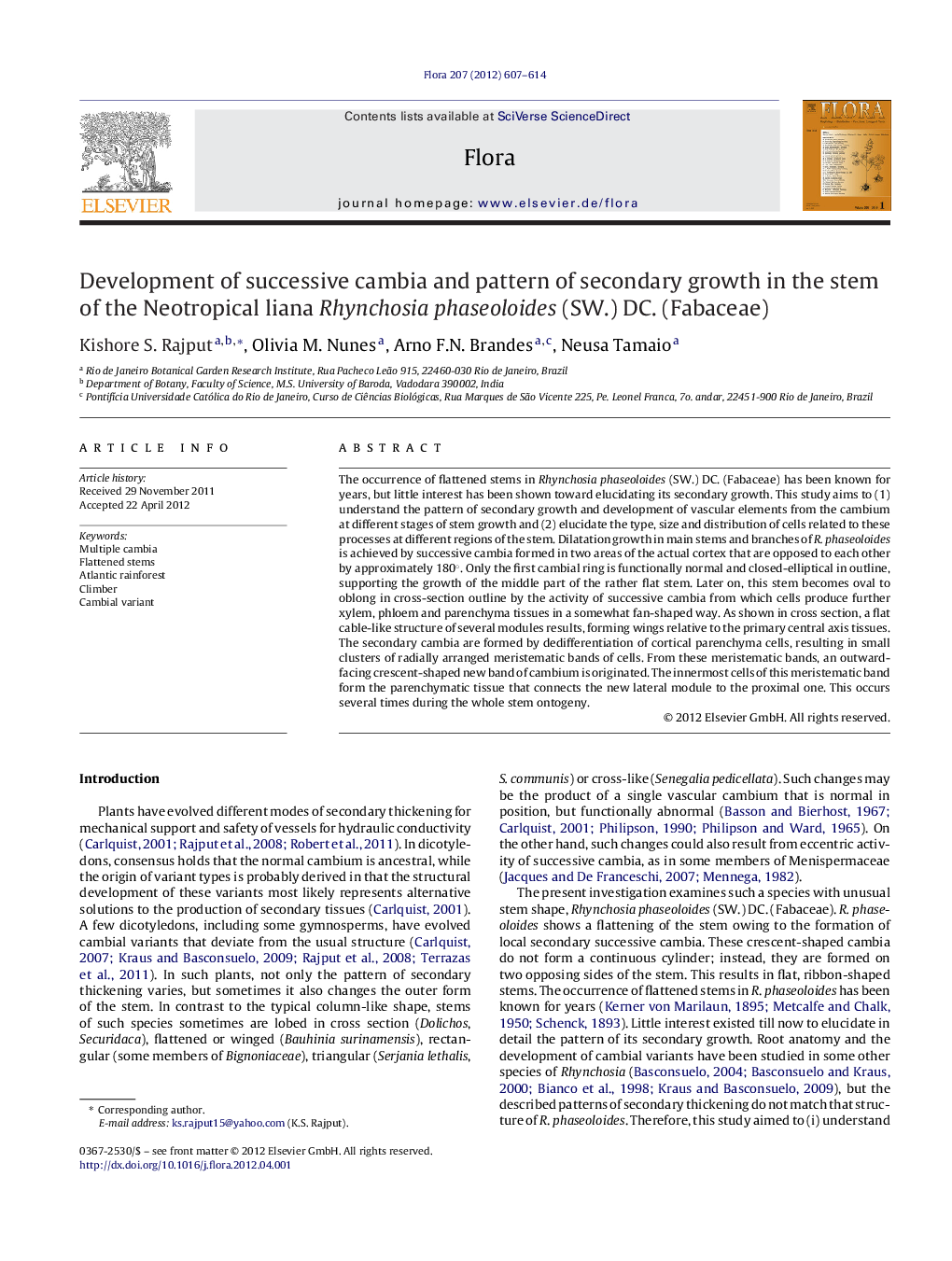| Article ID | Journal | Published Year | Pages | File Type |
|---|---|---|---|---|
| 2179631 | Flora - Morphology, Distribution, Functional Ecology of Plants | 2012 | 8 Pages |
The occurrence of flattened stems in Rhynchosia phaseoloides (SW.) DC. (Fabaceae) has been known for years, but little interest has been shown toward elucidating its secondary growth. This study aims to (1) understand the pattern of secondary growth and development of vascular elements from the cambium at different stages of stem growth and (2) elucidate the type, size and distribution of cells related to these processes at different regions of the stem. Dilatation growth in main stems and branches of R. phaseoloides is achieved by successive cambia formed in two areas of the actual cortex that are opposed to each other by approximately 180°. Only the first cambial ring is functionally normal and closed-elliptical in outline, supporting the growth of the middle part of the rather flat stem. Later on, this stem becomes oval to oblong in cross-section outline by the activity of successive cambia from which cells produce further xylem, phloem and parenchyma tissues in a somewhat fan-shaped way. As shown in cross section, a flat cable-like structure of several modules results, forming wings relative to the primary central axis tissues. The secondary cambia are formed by dedifferentiation of cortical parenchyma cells, resulting in small clusters of radially arranged meristematic bands of cells. From these meristematic bands, an outward-facing crescent-shaped new band of cambium is originated. The innermost cells of this meristematic band form the parenchymatic tissue that connects the new lateral module to the proximal one. This occurs several times during the whole stem ontogeny.
